Contemporary Business Economics: Analysis of Demand, Supply & Theories
VerifiedAdded on 2023/06/15
|14
|3318
|417
Report
AI Summary
This report delves into the core concepts of microeconomics, specifically the laws of demand and supply, within the context of contemporary business economics. It uses Unilever, a global consumer goods corporation, as a case study to illustrate these principles. The report explains how the law ...
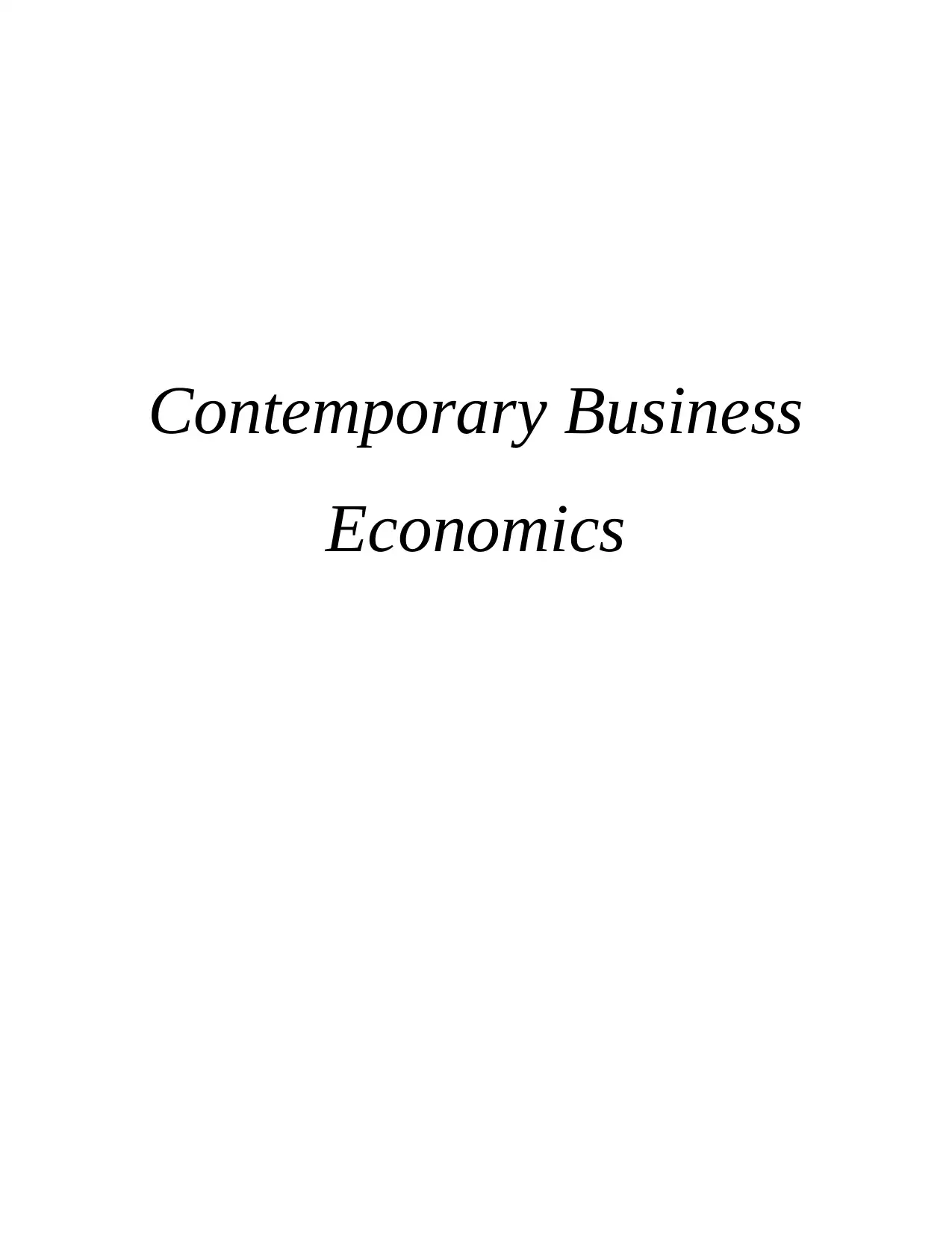
Contemporary Business
Economics
Economics
Paraphrase This Document
Need a fresh take? Get an instant paraphrase of this document with our AI Paraphraser
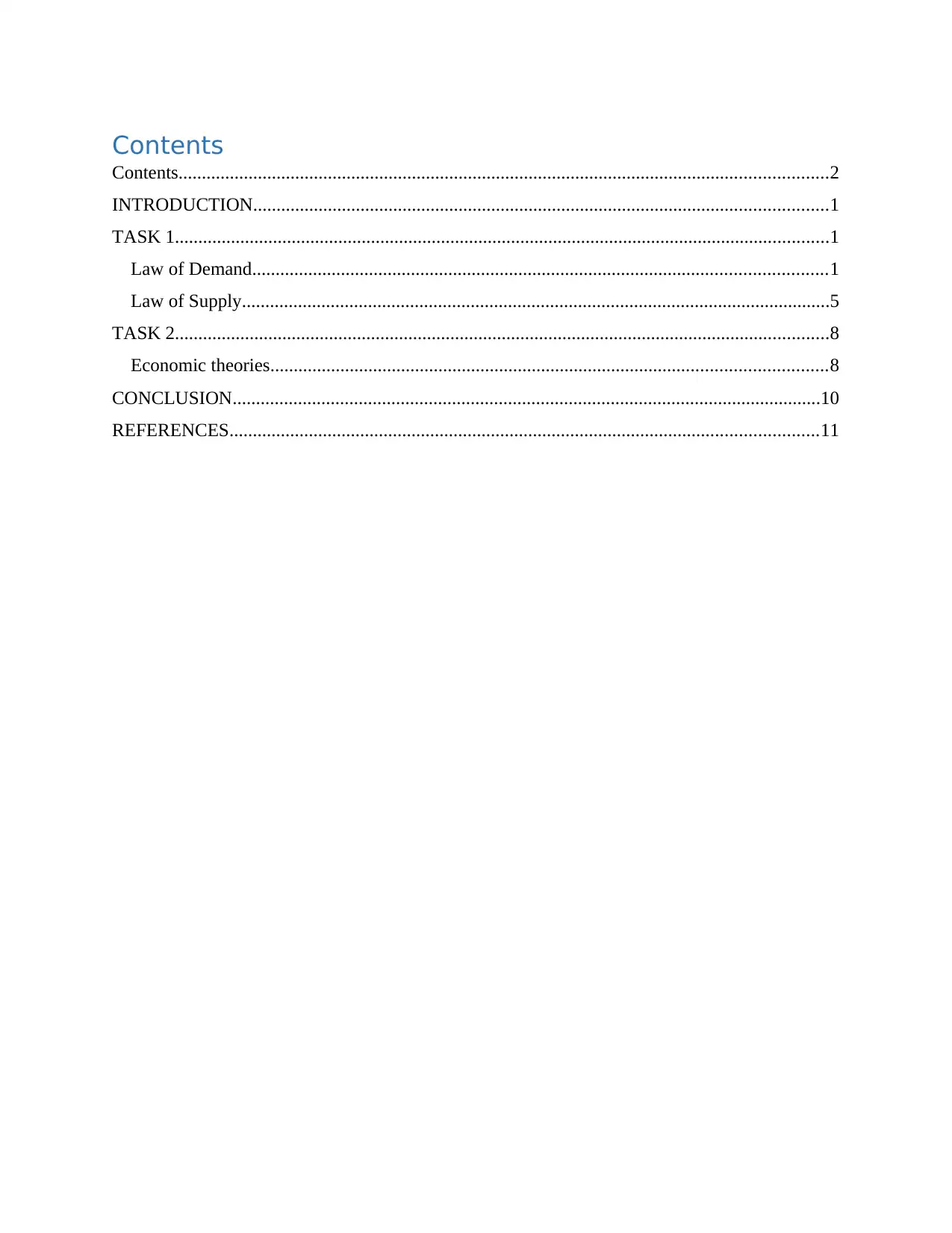
Contents
Contents...........................................................................................................................................2
INTRODUCTION...........................................................................................................................1
TASK 1............................................................................................................................................1
Law of Demand...........................................................................................................................1
Law of Supply..............................................................................................................................5
TASK 2............................................................................................................................................8
Economic theories.......................................................................................................................8
CONCLUSION..............................................................................................................................10
REFERENCES..............................................................................................................................11
Contents...........................................................................................................................................2
INTRODUCTION...........................................................................................................................1
TASK 1............................................................................................................................................1
Law of Demand...........................................................................................................................1
Law of Supply..............................................................................................................................5
TASK 2............................................................................................................................................8
Economic theories.......................................................................................................................8
CONCLUSION..............................................................................................................................10
REFERENCES..............................................................................................................................11
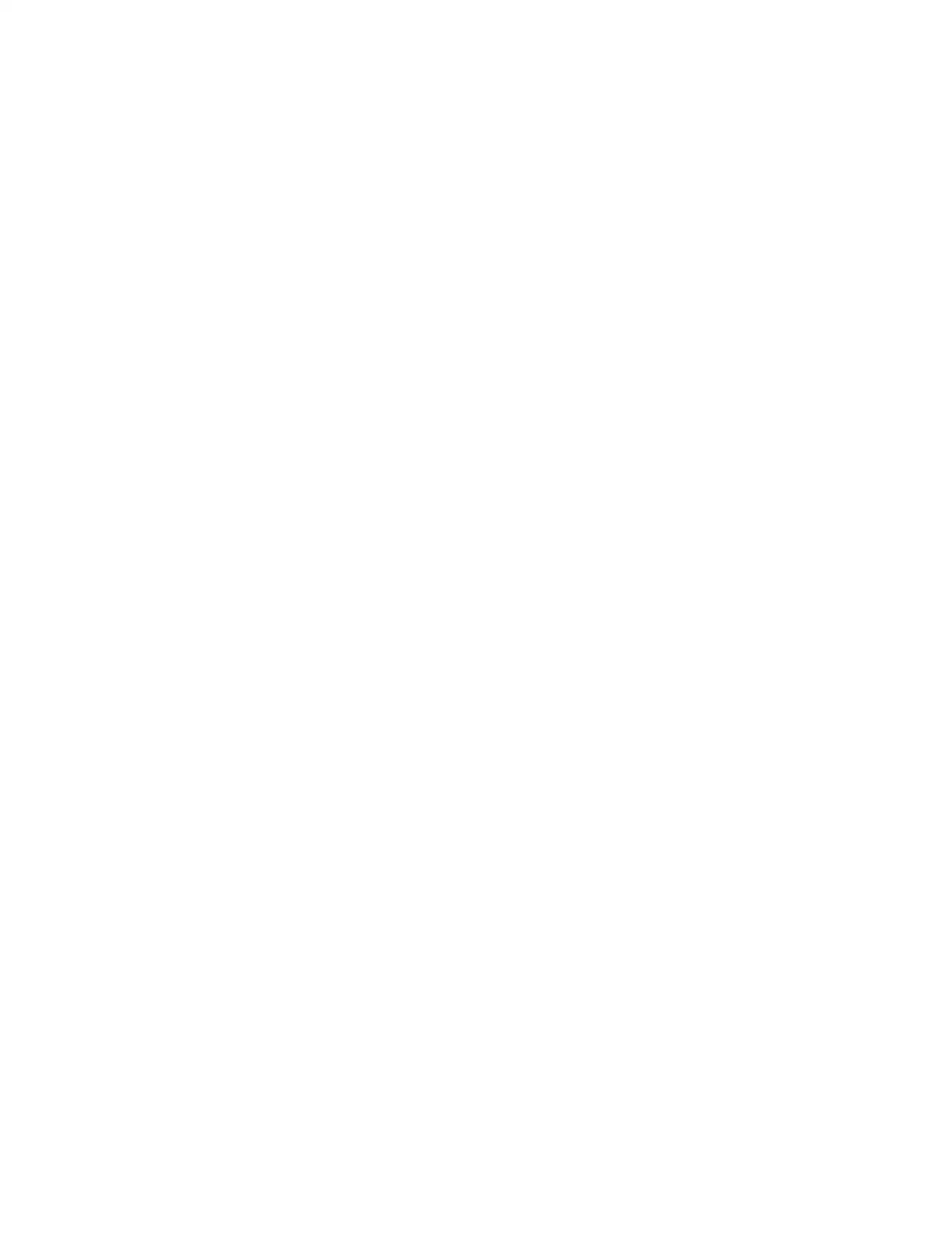
You're viewing a preview
Unlock full access by subscribing today!
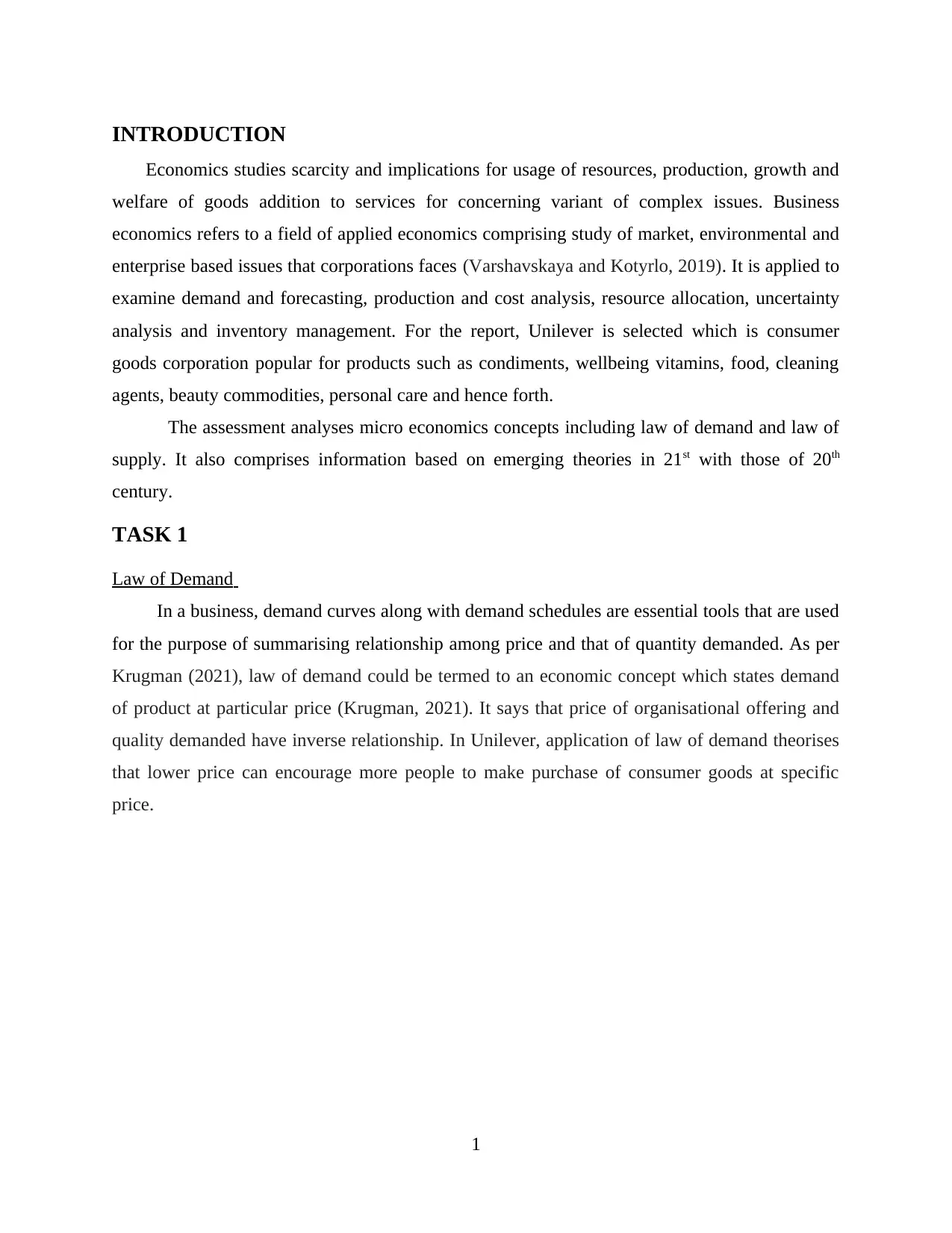
INTRODUCTION
Economics studies scarcity and implications for usage of resources, production, growth and
welfare of goods addition to services for concerning variant of complex issues. Business
economics refers to a field of applied economics comprising study of market, environmental and
enterprise based issues that corporations faces (Varshavskaya and Kotyrlo, 2019). It is applied to
examine demand and forecasting, production and cost analysis, resource allocation, uncertainty
analysis and inventory management. For the report, Unilever is selected which is consumer
goods corporation popular for products such as condiments, wellbeing vitamins, food, cleaning
agents, beauty commodities, personal care and hence forth.
The assessment analyses micro economics concepts including law of demand and law of
supply. It also comprises information based on emerging theories in 21st with those of 20th
century.
TASK 1
Law of Demand
In a business, demand curves along with demand schedules are essential tools that are used
for the purpose of summarising relationship among price and that of quantity demanded. As per
Krugman (2021), law of demand could be termed to an economic concept which states demand
of product at particular price (Krugman, 2021). It says that price of organisational offering and
quality demanded have inverse relationship. In Unilever, application of law of demand theorises
that lower price can encourage more people to make purchase of consumer goods at specific
price.
1
Economics studies scarcity and implications for usage of resources, production, growth and
welfare of goods addition to services for concerning variant of complex issues. Business
economics refers to a field of applied economics comprising study of market, environmental and
enterprise based issues that corporations faces (Varshavskaya and Kotyrlo, 2019). It is applied to
examine demand and forecasting, production and cost analysis, resource allocation, uncertainty
analysis and inventory management. For the report, Unilever is selected which is consumer
goods corporation popular for products such as condiments, wellbeing vitamins, food, cleaning
agents, beauty commodities, personal care and hence forth.
The assessment analyses micro economics concepts including law of demand and law of
supply. It also comprises information based on emerging theories in 21st with those of 20th
century.
TASK 1
Law of Demand
In a business, demand curves along with demand schedules are essential tools that are used
for the purpose of summarising relationship among price and that of quantity demanded. As per
Krugman (2021), law of demand could be termed to an economic concept which states demand
of product at particular price (Krugman, 2021). It says that price of organisational offering and
quality demanded have inverse relationship. In Unilever, application of law of demand theorises
that lower price can encourage more people to make purchase of consumer goods at specific
price.
1
Paraphrase This Document
Need a fresh take? Get an instant paraphrase of this document with our AI Paraphraser
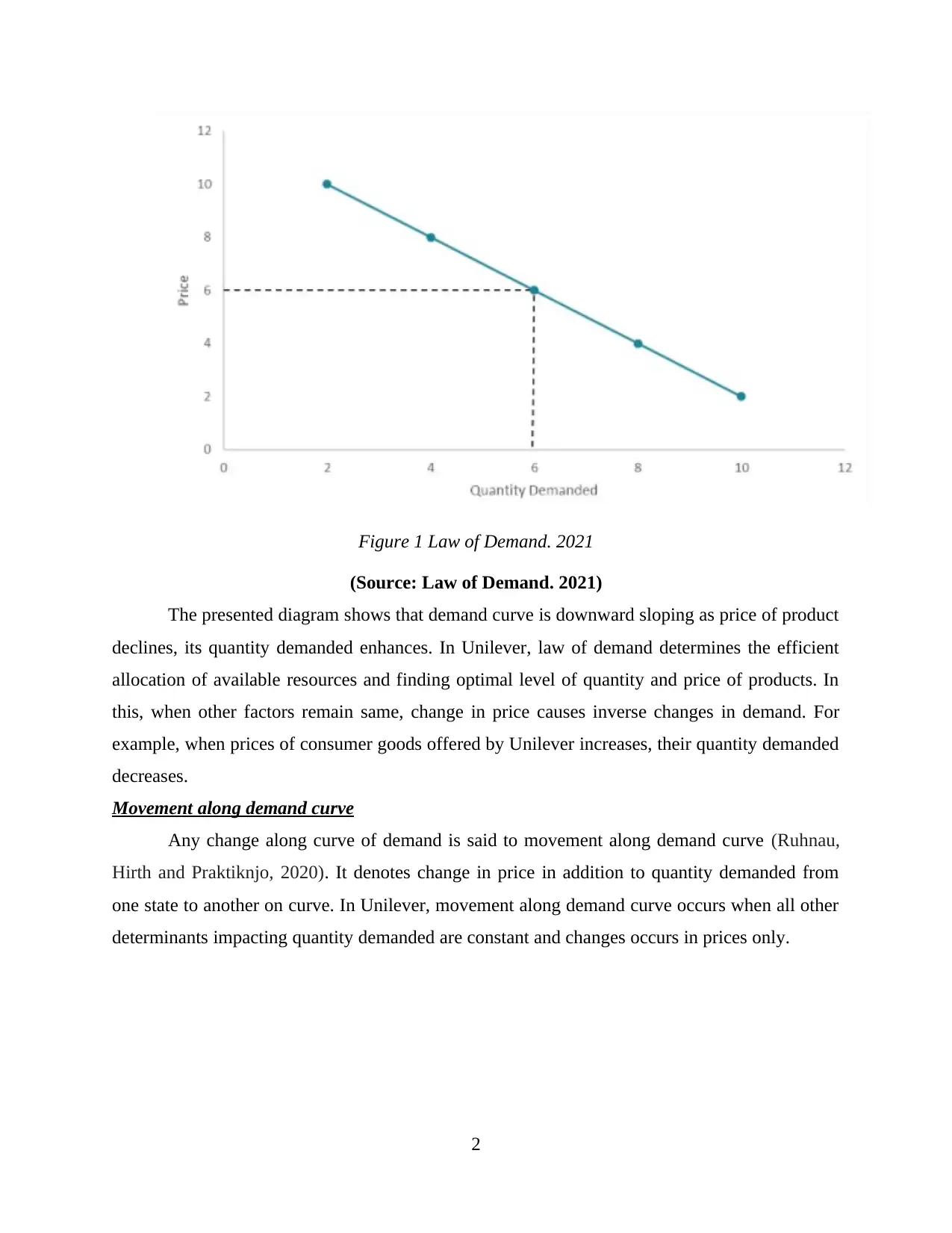
Figure 1 Law of Demand. 2021
(Source: Law of Demand. 2021)
The presented diagram shows that demand curve is downward sloping as price of product
declines, its quantity demanded enhances. In Unilever, law of demand determines the efficient
allocation of available resources and finding optimal level of quantity and price of products. In
this, when other factors remain same, change in price causes inverse changes in demand. For
example, when prices of consumer goods offered by Unilever increases, their quantity demanded
decreases.
Movement along demand curve
Any change along curve of demand is said to movement along demand curve (Ruhnau,
Hirth and Praktiknjo, 2020). It denotes change in price in addition to quantity demanded from
one state to another on curve. In Unilever, movement along demand curve occurs when all other
determinants impacting quantity demanded are constant and changes occurs in prices only.
2
(Source: Law of Demand. 2021)
The presented diagram shows that demand curve is downward sloping as price of product
declines, its quantity demanded enhances. In Unilever, law of demand determines the efficient
allocation of available resources and finding optimal level of quantity and price of products. In
this, when other factors remain same, change in price causes inverse changes in demand. For
example, when prices of consumer goods offered by Unilever increases, their quantity demanded
decreases.
Movement along demand curve
Any change along curve of demand is said to movement along demand curve (Ruhnau,
Hirth and Praktiknjo, 2020). It denotes change in price in addition to quantity demanded from
one state to another on curve. In Unilever, movement along demand curve occurs when all other
determinants impacting quantity demanded are constant and changes occurs in prices only.
2

Figure 2 Movement along demand curve. 2021
(Source: Movement along demand curve, 2021)
The above image shows how demand from a commodity is impacted by change in prices.
In the figure, it is determined that when product price is OP1 and its demand is OQ1 (Movement
along demand curve, 2021). Contraction and expansion are two movements along demand curve
of Unilever. Upward movement is also known as contraction of demand that occurs when
product price rises, their quantity demanded decreases. Nonetheless, downward movement is
also named as expansion of demand that takes place when price of offerings falls, rise in quantity
demanded is achieved. Changes in price of product is one of factors that causes movement along
demand curve as change in price changes quantity demanded in accordance to original demand
relationship.
Shift in demand curve
Changes in quantity demanded of specific item of company, at possible price because of
fluctuations in other factors is shift in demand curve (Minten, Taffesse and Brown, 2018). In this
type of scenario, change in price with change in other determinants impacts quantity demanded.
In relevance to Unilever, demand follows distinct curve for change in every price. In the
company, it implies that there are changes in original demand relationship that reflects that
quantity demanded changes due to impact of factor other than price.
3
(Source: Movement along demand curve, 2021)
The above image shows how demand from a commodity is impacted by change in prices.
In the figure, it is determined that when product price is OP1 and its demand is OQ1 (Movement
along demand curve, 2021). Contraction and expansion are two movements along demand curve
of Unilever. Upward movement is also known as contraction of demand that occurs when
product price rises, their quantity demanded decreases. Nonetheless, downward movement is
also named as expansion of demand that takes place when price of offerings falls, rise in quantity
demanded is achieved. Changes in price of product is one of factors that causes movement along
demand curve as change in price changes quantity demanded in accordance to original demand
relationship.
Shift in demand curve
Changes in quantity demanded of specific item of company, at possible price because of
fluctuations in other factors is shift in demand curve (Minten, Taffesse and Brown, 2018). In this
type of scenario, change in price with change in other determinants impacts quantity demanded.
In relevance to Unilever, demand follows distinct curve for change in every price. In the
company, it implies that there are changes in original demand relationship that reflects that
quantity demanded changes due to impact of factor other than price.
3
You're viewing a preview
Unlock full access by subscribing today!
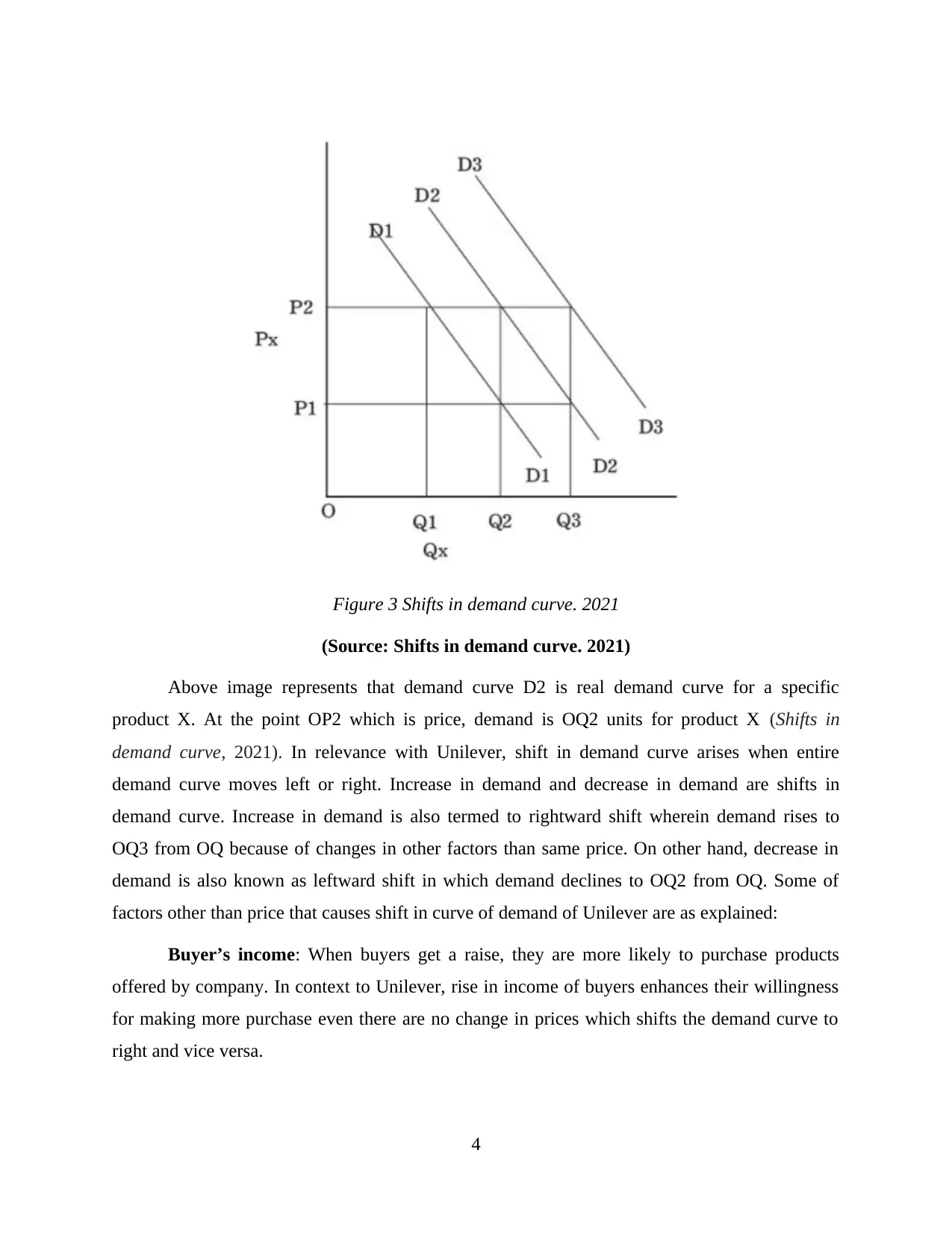
Figure 3 Shifts in demand curve. 2021
(Source: Shifts in demand curve. 2021)
Above image represents that demand curve D2 is real demand curve for a specific
product X. At the point OP2 which is price, demand is OQ2 units for product X (Shifts in
demand curve, 2021). In relevance with Unilever, shift in demand curve arises when entire
demand curve moves left or right. Increase in demand and decrease in demand are shifts in
demand curve. Increase in demand is also termed to rightward shift wherein demand rises to
OQ3 from OQ because of changes in other factors than same price. On other hand, decrease in
demand is also known as leftward shift in which demand declines to OQ2 from OQ. Some of
factors other than price that causes shift in curve of demand of Unilever are as explained:
Buyer’s income: When buyers get a raise, they are more likely to purchase products
offered by company. In context to Unilever, rise in income of buyers enhances their willingness
for making more purchase even there are no change in prices which shifts the demand curve to
right and vice versa.
4
(Source: Shifts in demand curve. 2021)
Above image represents that demand curve D2 is real demand curve for a specific
product X. At the point OP2 which is price, demand is OQ2 units for product X (Shifts in
demand curve, 2021). In relevance with Unilever, shift in demand curve arises when entire
demand curve moves left or right. Increase in demand and decrease in demand are shifts in
demand curve. Increase in demand is also termed to rightward shift wherein demand rises to
OQ3 from OQ because of changes in other factors than same price. On other hand, decrease in
demand is also known as leftward shift in which demand declines to OQ2 from OQ. Some of
factors other than price that causes shift in curve of demand of Unilever are as explained:
Buyer’s income: When buyers get a raise, they are more likely to purchase products
offered by company. In context to Unilever, rise in income of buyers enhances their willingness
for making more purchase even there are no change in prices which shifts the demand curve to
right and vice versa.
4
Paraphrase This Document
Need a fresh take? Get an instant paraphrase of this document with our AI Paraphraser
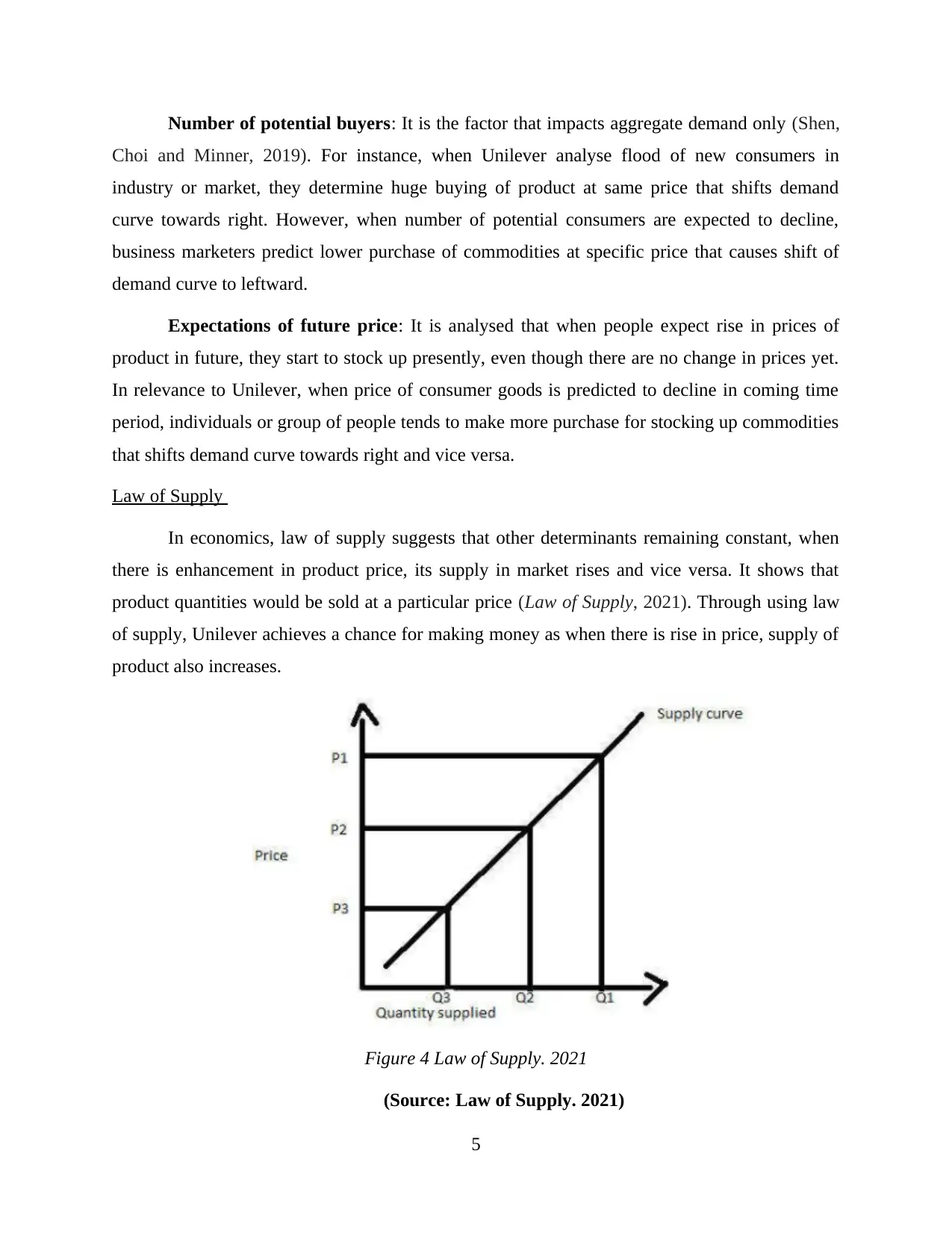
Number of potential buyers: It is the factor that impacts aggregate demand only (Shen,
Choi and Minner, 2019). For instance, when Unilever analyse flood of new consumers in
industry or market, they determine huge buying of product at same price that shifts demand
curve towards right. However, when number of potential consumers are expected to decline,
business marketers predict lower purchase of commodities at specific price that causes shift of
demand curve to leftward.
Expectations of future price: It is analysed that when people expect rise in prices of
product in future, they start to stock up presently, even though there are no change in prices yet.
In relevance to Unilever, when price of consumer goods is predicted to decline in coming time
period, individuals or group of people tends to make more purchase for stocking up commodities
that shifts demand curve towards right and vice versa.
Law of Supply
In economics, law of supply suggests that other determinants remaining constant, when
there is enhancement in product price, its supply in market rises and vice versa. It shows that
product quantities would be sold at a particular price (Law of Supply, 2021). Through using law
of supply, Unilever achieves a chance for making money as when there is rise in price, supply of
product also increases.
Figure 4 Law of Supply. 2021
(Source: Law of Supply. 2021)
5
Choi and Minner, 2019). For instance, when Unilever analyse flood of new consumers in
industry or market, they determine huge buying of product at same price that shifts demand
curve towards right. However, when number of potential consumers are expected to decline,
business marketers predict lower purchase of commodities at specific price that causes shift of
demand curve to leftward.
Expectations of future price: It is analysed that when people expect rise in prices of
product in future, they start to stock up presently, even though there are no change in prices yet.
In relevance to Unilever, when price of consumer goods is predicted to decline in coming time
period, individuals or group of people tends to make more purchase for stocking up commodities
that shifts demand curve towards right and vice versa.
Law of Supply
In economics, law of supply suggests that other determinants remaining constant, when
there is enhancement in product price, its supply in market rises and vice versa. It shows that
product quantities would be sold at a particular price (Law of Supply, 2021). Through using law
of supply, Unilever achieves a chance for making money as when there is rise in price, supply of
product also increases.
Figure 4 Law of Supply. 2021
(Source: Law of Supply. 2021)
5
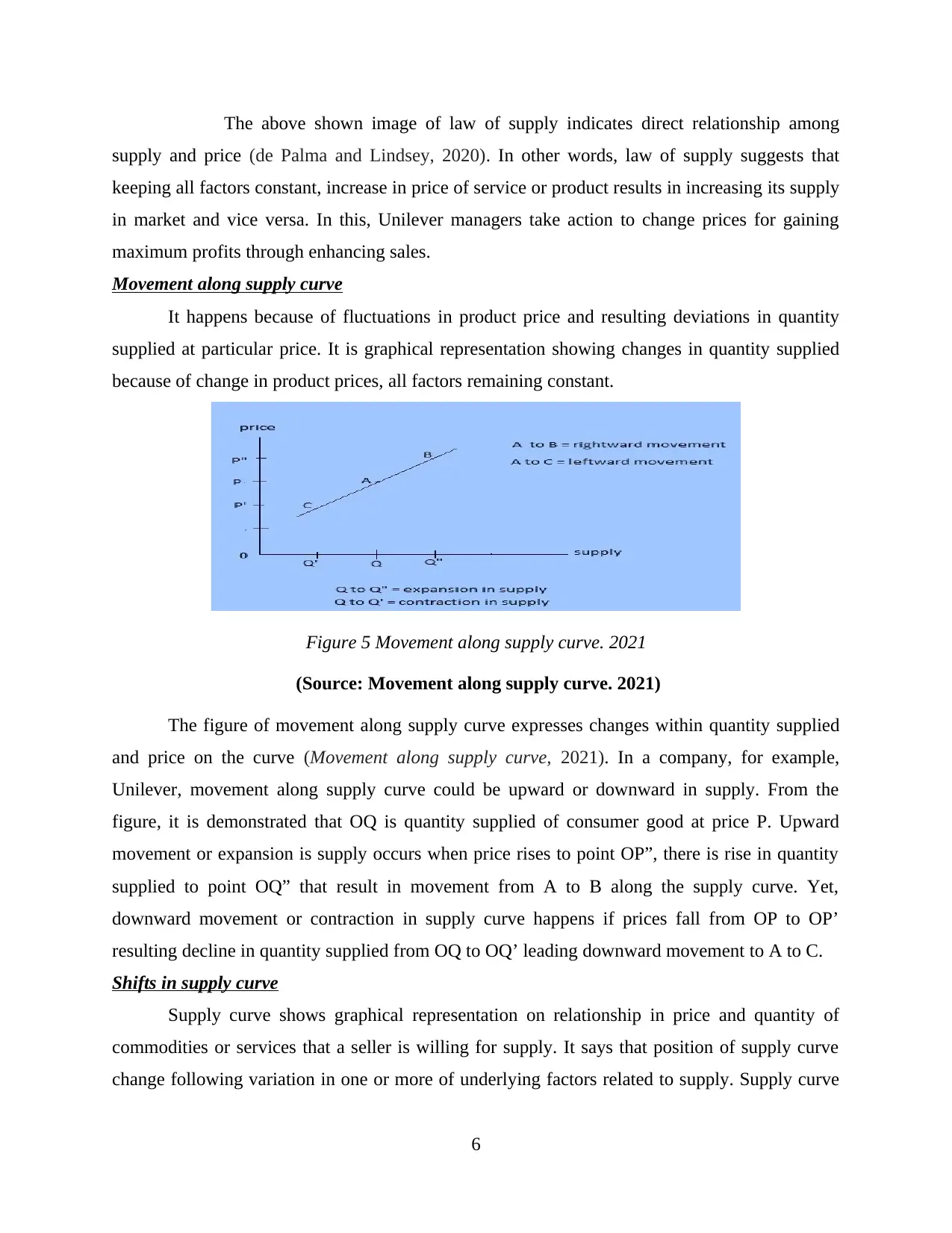
The above shown image of law of supply indicates direct relationship among
supply and price (de Palma and Lindsey, 2020). In other words, law of supply suggests that
keeping all factors constant, increase in price of service or product results in increasing its supply
in market and vice versa. In this, Unilever managers take action to change prices for gaining
maximum profits through enhancing sales.
Movement along supply curve
It happens because of fluctuations in product price and resulting deviations in quantity
supplied at particular price. It is graphical representation showing changes in quantity supplied
because of change in product prices, all factors remaining constant.
Figure 5 Movement along supply curve. 2021
(Source: Movement along supply curve. 2021)
The figure of movement along supply curve expresses changes within quantity supplied
and price on the curve (Movement along supply curve, 2021). In a company, for example,
Unilever, movement along supply curve could be upward or downward in supply. From the
figure, it is demonstrated that OQ is quantity supplied of consumer good at price P. Upward
movement or expansion is supply occurs when price rises to point OP”, there is rise in quantity
supplied to point OQ” that result in movement from A to B along the supply curve. Yet,
downward movement or contraction in supply curve happens if prices fall from OP to OP’
resulting decline in quantity supplied from OQ to OQ’ leading downward movement to A to C.
Shifts in supply curve
Supply curve shows graphical representation on relationship in price and quantity of
commodities or services that a seller is willing for supply. It says that position of supply curve
change following variation in one or more of underlying factors related to supply. Supply curve
6
supply and price (de Palma and Lindsey, 2020). In other words, law of supply suggests that
keeping all factors constant, increase in price of service or product results in increasing its supply
in market and vice versa. In this, Unilever managers take action to change prices for gaining
maximum profits through enhancing sales.
Movement along supply curve
It happens because of fluctuations in product price and resulting deviations in quantity
supplied at particular price. It is graphical representation showing changes in quantity supplied
because of change in product prices, all factors remaining constant.
Figure 5 Movement along supply curve. 2021
(Source: Movement along supply curve. 2021)
The figure of movement along supply curve expresses changes within quantity supplied
and price on the curve (Movement along supply curve, 2021). In a company, for example,
Unilever, movement along supply curve could be upward or downward in supply. From the
figure, it is demonstrated that OQ is quantity supplied of consumer good at price P. Upward
movement or expansion is supply occurs when price rises to point OP”, there is rise in quantity
supplied to point OQ” that result in movement from A to B along the supply curve. Yet,
downward movement or contraction in supply curve happens if prices fall from OP to OP’
resulting decline in quantity supplied from OQ to OQ’ leading downward movement to A to C.
Shifts in supply curve
Supply curve shows graphical representation on relationship in price and quantity of
commodities or services that a seller is willing for supply. It says that position of supply curve
change following variation in one or more of underlying factors related to supply. Supply curve
6
You're viewing a preview
Unlock full access by subscribing today!

is closer to horizontal for organisational commodities with more elastic supply addition to closer
to vertical for offerings with less elastic supply.
Figure 6 Shifts in supply curve. 2021
(Source: Shifts in supply curve. 2021)
The figure of law of supply shows supply curve is representation on graph between
product cost and quantity supplies in given period. In association to businesses, such as Unilever,
when there are changes in quantity supplied because of change in other factors than price causes
supply curve not to contract or extent rather shift completely (Shift in supply curve, 2021).
Rightward shift is termed to shift in supply curve if quantity supplied increases at similar price, it
is because of suitable changes in nonprice determinants of manufacturing or production of
product. Correspondingly, leftward shift arises if there is decline in quantity supplied at same
price. In Unilever, factors causing shifts in supply curve are mentioned underneath:
Prices of inputs: In a company, number of variant inputs are used for producing any type
of commodity or service. In Unilever, when prices of relevant input rises, managers of
entity face higher costs of manufacturing or production. As an outcome, producing
consumer goods becomes less profitable addition to causing a situation of reducing
supply that causes a shift of supply curve to leftwards.
Number of sellers: In an industry, number of sellers has important effects on supply as
when huge companies enter in the sector for offering particular good, its supply increases
that causes supply curve to shift left (Jabbarzadeh, Haughton and Khosrojerdi, 2018). In
7
to vertical for offerings with less elastic supply.
Figure 6 Shifts in supply curve. 2021
(Source: Shifts in supply curve. 2021)
The figure of law of supply shows supply curve is representation on graph between
product cost and quantity supplies in given period. In association to businesses, such as Unilever,
when there are changes in quantity supplied because of change in other factors than price causes
supply curve not to contract or extent rather shift completely (Shift in supply curve, 2021).
Rightward shift is termed to shift in supply curve if quantity supplied increases at similar price, it
is because of suitable changes in nonprice determinants of manufacturing or production of
product. Correspondingly, leftward shift arises if there is decline in quantity supplied at same
price. In Unilever, factors causing shifts in supply curve are mentioned underneath:
Prices of inputs: In a company, number of variant inputs are used for producing any type
of commodity or service. In Unilever, when prices of relevant input rises, managers of
entity face higher costs of manufacturing or production. As an outcome, producing
consumer goods becomes less profitable addition to causing a situation of reducing
supply that causes a shift of supply curve to leftwards.
Number of sellers: In an industry, number of sellers has important effects on supply as
when huge companies enter in the sector for offering particular good, its supply increases
that causes supply curve to shift left (Jabbarzadeh, Haughton and Khosrojerdi, 2018). In
7
Paraphrase This Document
Need a fresh take? Get an instant paraphrase of this document with our AI Paraphraser
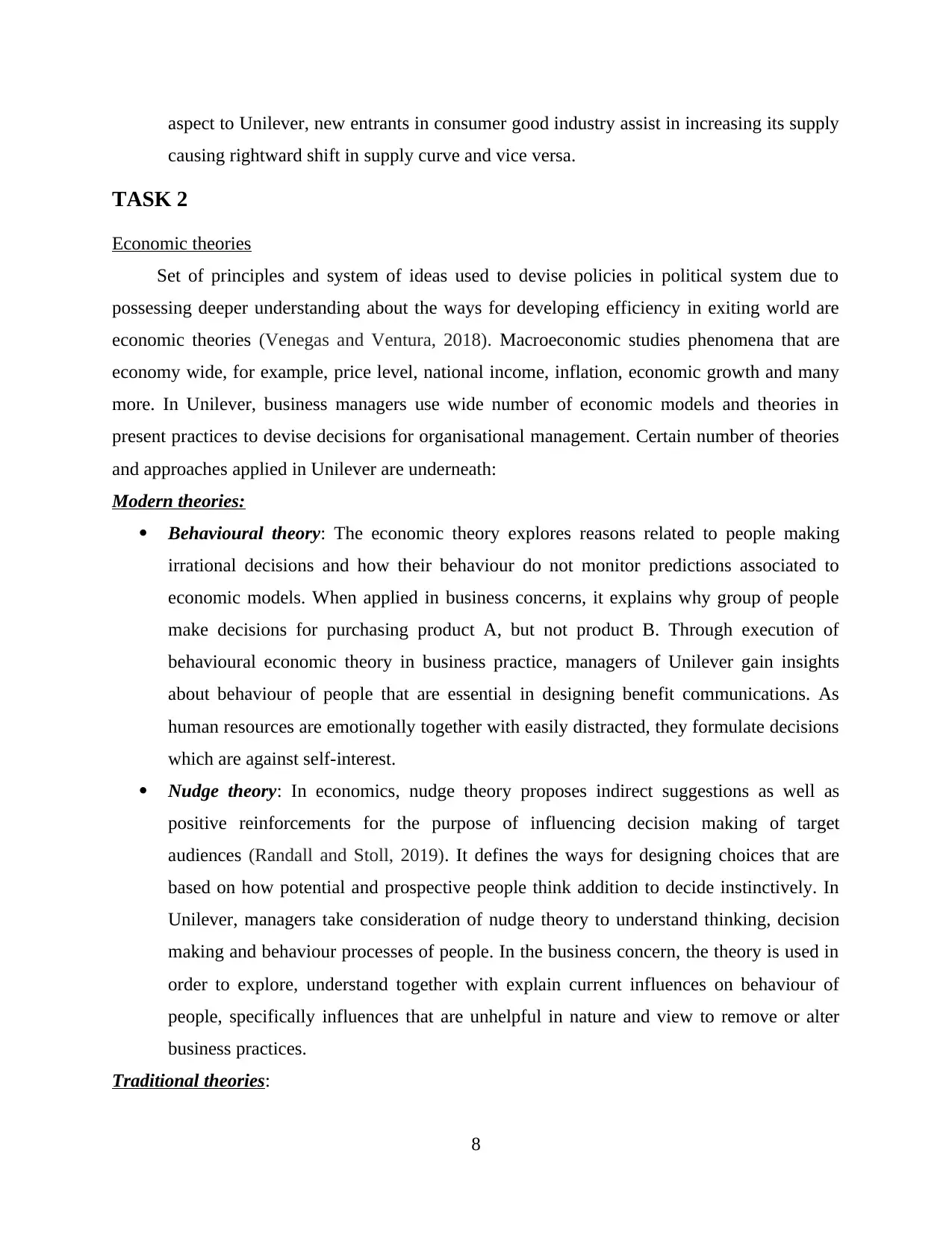
aspect to Unilever, new entrants in consumer good industry assist in increasing its supply
causing rightward shift in supply curve and vice versa.
TASK 2
Economic theories
Set of principles and system of ideas used to devise policies in political system due to
possessing deeper understanding about the ways for developing efficiency in exiting world are
economic theories (Venegas and Ventura, 2018). Macroeconomic studies phenomena that are
economy wide, for example, price level, national income, inflation, economic growth and many
more. In Unilever, business managers use wide number of economic models and theories in
present practices to devise decisions for organisational management. Certain number of theories
and approaches applied in Unilever are underneath:
Modern theories:
Behavioural theory: The economic theory explores reasons related to people making
irrational decisions and how their behaviour do not monitor predictions associated to
economic models. When applied in business concerns, it explains why group of people
make decisions for purchasing product A, but not product B. Through execution of
behavioural economic theory in business practice, managers of Unilever gain insights
about behaviour of people that are essential in designing benefit communications. As
human resources are emotionally together with easily distracted, they formulate decisions
which are against self-interest.
Nudge theory: In economics, nudge theory proposes indirect suggestions as well as
positive reinforcements for the purpose of influencing decision making of target
audiences (Randall and Stoll, 2019). It defines the ways for designing choices that are
based on how potential and prospective people think addition to decide instinctively. In
Unilever, managers take consideration of nudge theory to understand thinking, decision
making and behaviour processes of people. In the business concern, the theory is used in
order to explore, understand together with explain current influences on behaviour of
people, specifically influences that are unhelpful in nature and view to remove or alter
business practices.
Traditional theories:
8
causing rightward shift in supply curve and vice versa.
TASK 2
Economic theories
Set of principles and system of ideas used to devise policies in political system due to
possessing deeper understanding about the ways for developing efficiency in exiting world are
economic theories (Venegas and Ventura, 2018). Macroeconomic studies phenomena that are
economy wide, for example, price level, national income, inflation, economic growth and many
more. In Unilever, business managers use wide number of economic models and theories in
present practices to devise decisions for organisational management. Certain number of theories
and approaches applied in Unilever are underneath:
Modern theories:
Behavioural theory: The economic theory explores reasons related to people making
irrational decisions and how their behaviour do not monitor predictions associated to
economic models. When applied in business concerns, it explains why group of people
make decisions for purchasing product A, but not product B. Through execution of
behavioural economic theory in business practice, managers of Unilever gain insights
about behaviour of people that are essential in designing benefit communications. As
human resources are emotionally together with easily distracted, they formulate decisions
which are against self-interest.
Nudge theory: In economics, nudge theory proposes indirect suggestions as well as
positive reinforcements for the purpose of influencing decision making of target
audiences (Randall and Stoll, 2019). It defines the ways for designing choices that are
based on how potential and prospective people think addition to decide instinctively. In
Unilever, managers take consideration of nudge theory to understand thinking, decision
making and behaviour processes of people. In the business concern, the theory is used in
order to explore, understand together with explain current influences on behaviour of
people, specifically influences that are unhelpful in nature and view to remove or alter
business practices.
Traditional theories:
8
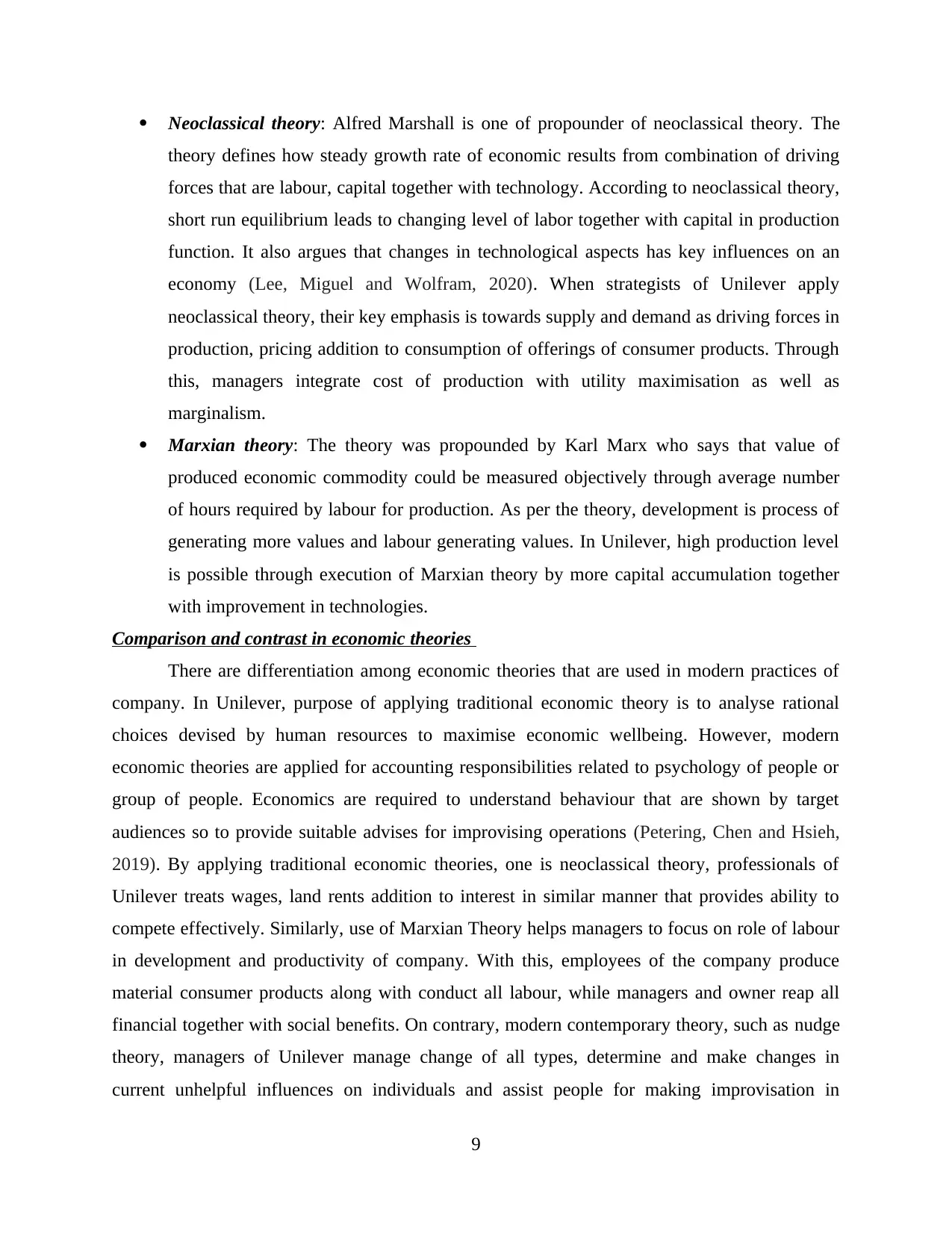
Neoclassical theory: Alfred Marshall is one of propounder of neoclassical theory. The
theory defines how steady growth rate of economic results from combination of driving
forces that are labour, capital together with technology. According to neoclassical theory,
short run equilibrium leads to changing level of labor together with capital in production
function. It also argues that changes in technological aspects has key influences on an
economy (Lee, Miguel and Wolfram, 2020). When strategists of Unilever apply
neoclassical theory, their key emphasis is towards supply and demand as driving forces in
production, pricing addition to consumption of offerings of consumer products. Through
this, managers integrate cost of production with utility maximisation as well as
marginalism.
Marxian theory: The theory was propounded by Karl Marx who says that value of
produced economic commodity could be measured objectively through average number
of hours required by labour for production. As per the theory, development is process of
generating more values and labour generating values. In Unilever, high production level
is possible through execution of Marxian theory by more capital accumulation together
with improvement in technologies.
Comparison and contrast in economic theories
There are differentiation among economic theories that are used in modern practices of
company. In Unilever, purpose of applying traditional economic theory is to analyse rational
choices devised by human resources to maximise economic wellbeing. However, modern
economic theories are applied for accounting responsibilities related to psychology of people or
group of people. Economics are required to understand behaviour that are shown by target
audiences so to provide suitable advises for improvising operations (Petering, Chen and Hsieh,
2019). By applying traditional economic theories, one is neoclassical theory, professionals of
Unilever treats wages, land rents addition to interest in similar manner that provides ability to
compete effectively. Similarly, use of Marxian Theory helps managers to focus on role of labour
in development and productivity of company. With this, employees of the company produce
material consumer products along with conduct all labour, while managers and owner reap all
financial together with social benefits. On contrary, modern contemporary theory, such as nudge
theory, managers of Unilever manage change of all types, determine and make changes in
current unhelpful influences on individuals and assist people for making improvisation in
9
theory defines how steady growth rate of economic results from combination of driving
forces that are labour, capital together with technology. According to neoclassical theory,
short run equilibrium leads to changing level of labor together with capital in production
function. It also argues that changes in technological aspects has key influences on an
economy (Lee, Miguel and Wolfram, 2020). When strategists of Unilever apply
neoclassical theory, their key emphasis is towards supply and demand as driving forces in
production, pricing addition to consumption of offerings of consumer products. Through
this, managers integrate cost of production with utility maximisation as well as
marginalism.
Marxian theory: The theory was propounded by Karl Marx who says that value of
produced economic commodity could be measured objectively through average number
of hours required by labour for production. As per the theory, development is process of
generating more values and labour generating values. In Unilever, high production level
is possible through execution of Marxian theory by more capital accumulation together
with improvement in technologies.
Comparison and contrast in economic theories
There are differentiation among economic theories that are used in modern practices of
company. In Unilever, purpose of applying traditional economic theory is to analyse rational
choices devised by human resources to maximise economic wellbeing. However, modern
economic theories are applied for accounting responsibilities related to psychology of people or
group of people. Economics are required to understand behaviour that are shown by target
audiences so to provide suitable advises for improvising operations (Petering, Chen and Hsieh,
2019). By applying traditional economic theories, one is neoclassical theory, professionals of
Unilever treats wages, land rents addition to interest in similar manner that provides ability to
compete effectively. Similarly, use of Marxian Theory helps managers to focus on role of labour
in development and productivity of company. With this, employees of the company produce
material consumer products along with conduct all labour, while managers and owner reap all
financial together with social benefits. On contrary, modern contemporary theory, such as nudge
theory, managers of Unilever manage change of all types, determine and make changes in
current unhelpful influences on individuals and assist people for making improvisation in
9
You're viewing a preview
Unlock full access by subscribing today!
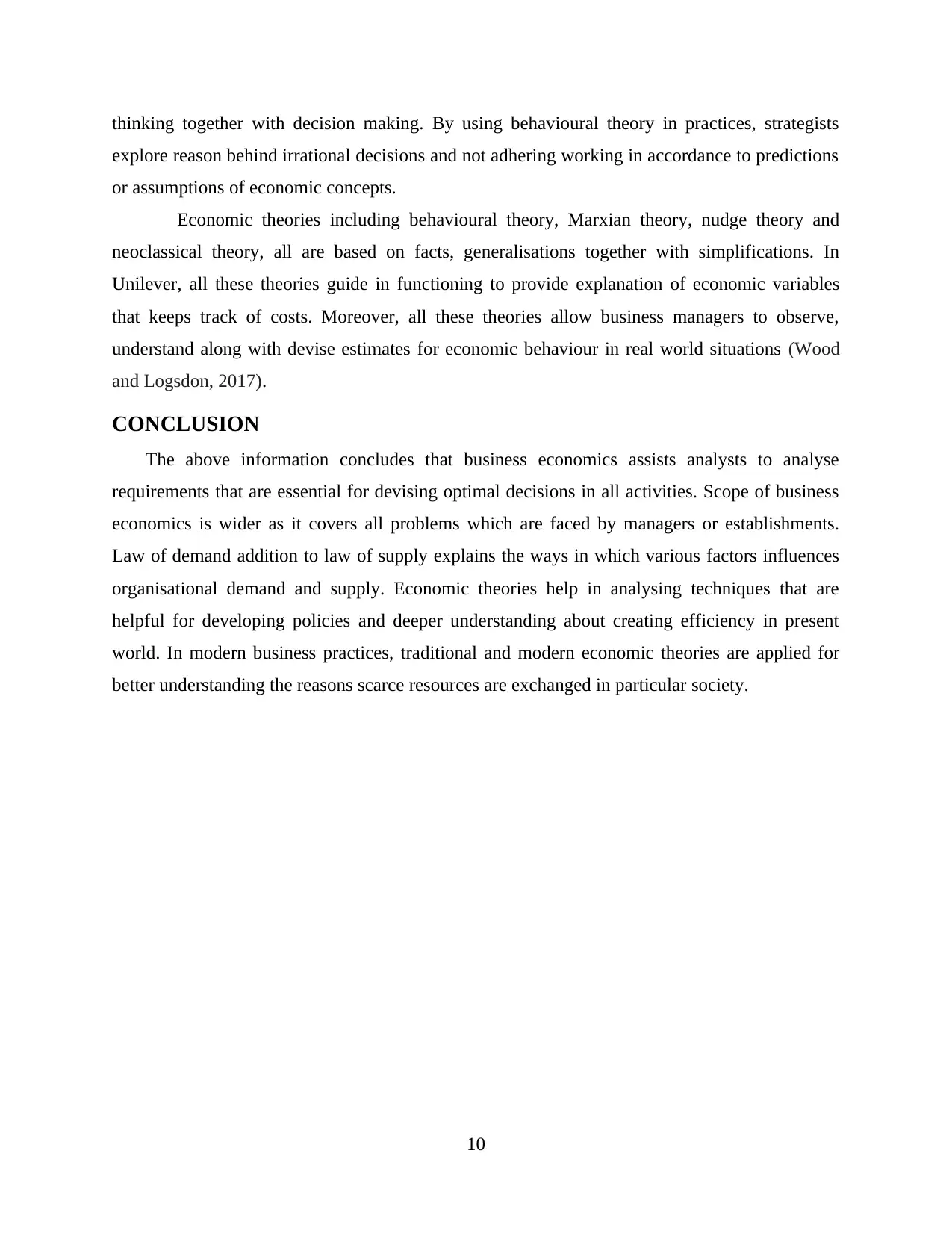
thinking together with decision making. By using behavioural theory in practices, strategists
explore reason behind irrational decisions and not adhering working in accordance to predictions
or assumptions of economic concepts.
Economic theories including behavioural theory, Marxian theory, nudge theory and
neoclassical theory, all are based on facts, generalisations together with simplifications. In
Unilever, all these theories guide in functioning to provide explanation of economic variables
that keeps track of costs. Moreover, all these theories allow business managers to observe,
understand along with devise estimates for economic behaviour in real world situations (Wood
and Logsdon, 2017).
CONCLUSION
The above information concludes that business economics assists analysts to analyse
requirements that are essential for devising optimal decisions in all activities. Scope of business
economics is wider as it covers all problems which are faced by managers or establishments.
Law of demand addition to law of supply explains the ways in which various factors influences
organisational demand and supply. Economic theories help in analysing techniques that are
helpful for developing policies and deeper understanding about creating efficiency in present
world. In modern business practices, traditional and modern economic theories are applied for
better understanding the reasons scarce resources are exchanged in particular society.
10
explore reason behind irrational decisions and not adhering working in accordance to predictions
or assumptions of economic concepts.
Economic theories including behavioural theory, Marxian theory, nudge theory and
neoclassical theory, all are based on facts, generalisations together with simplifications. In
Unilever, all these theories guide in functioning to provide explanation of economic variables
that keeps track of costs. Moreover, all these theories allow business managers to observe,
understand along with devise estimates for economic behaviour in real world situations (Wood
and Logsdon, 2017).
CONCLUSION
The above information concludes that business economics assists analysts to analyse
requirements that are essential for devising optimal decisions in all activities. Scope of business
economics is wider as it covers all problems which are faced by managers or establishments.
Law of demand addition to law of supply explains the ways in which various factors influences
organisational demand and supply. Economic theories help in analysing techniques that are
helpful for developing policies and deeper understanding about creating efficiency in present
world. In modern business practices, traditional and modern economic theories are applied for
better understanding the reasons scarce resources are exchanged in particular society.
10
Paraphrase This Document
Need a fresh take? Get an instant paraphrase of this document with our AI Paraphraser
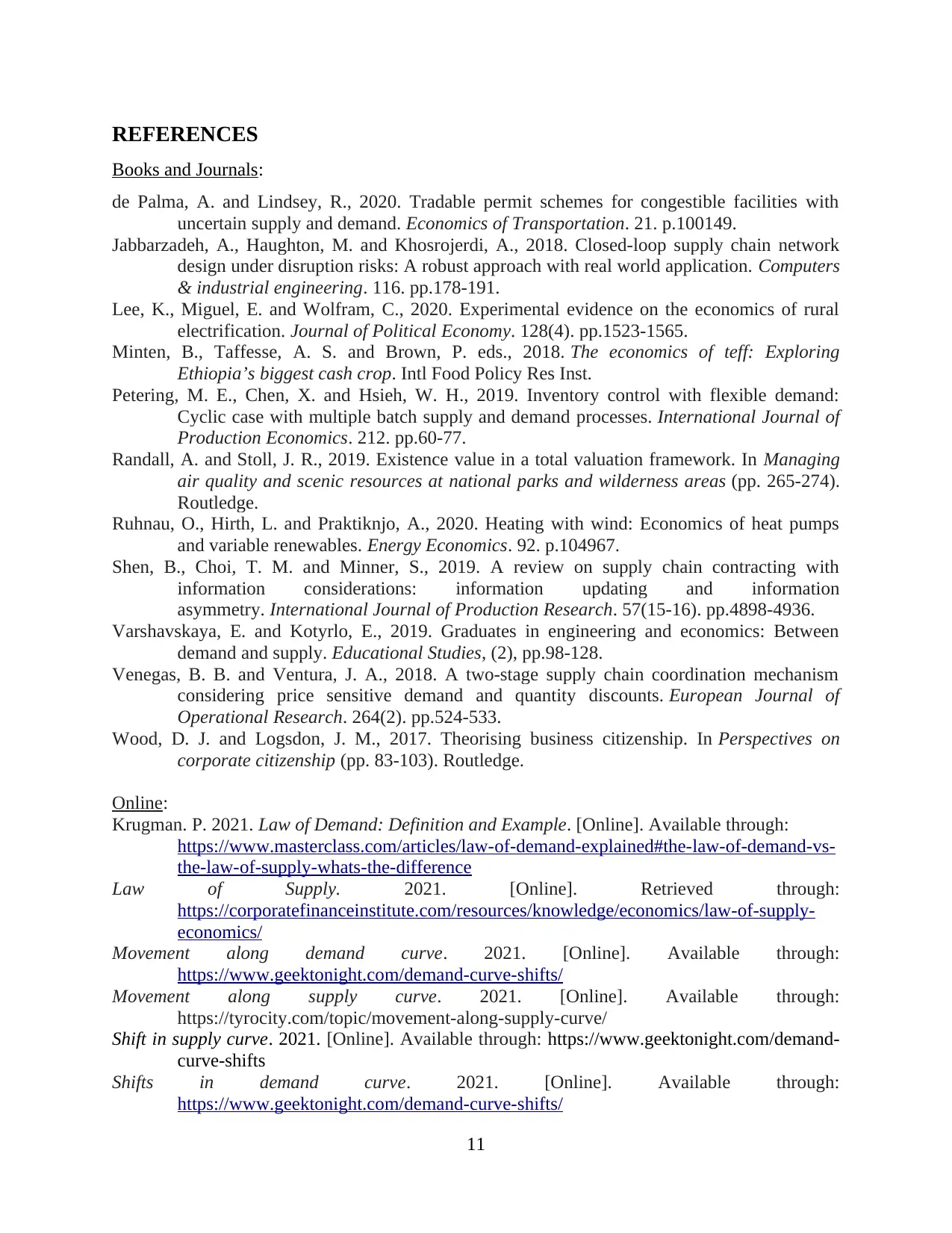
REFERENCES
Books and Journals:
de Palma, A. and Lindsey, R., 2020. Tradable permit schemes for congestible facilities with
uncertain supply and demand. Economics of Transportation. 21. p.100149.
Jabbarzadeh, A., Haughton, M. and Khosrojerdi, A., 2018. Closed-loop supply chain network
design under disruption risks: A robust approach with real world application. Computers
& industrial engineering. 116. pp.178-191.
Lee, K., Miguel, E. and Wolfram, C., 2020. Experimental evidence on the economics of rural
electrification. Journal of Political Economy. 128(4). pp.1523-1565.
Minten, B., Taffesse, A. S. and Brown, P. eds., 2018. The economics of teff: Exploring
Ethiopia’s biggest cash crop. Intl Food Policy Res Inst.
Petering, M. E., Chen, X. and Hsieh, W. H., 2019. Inventory control with flexible demand:
Cyclic case with multiple batch supply and demand processes. International Journal of
Production Economics. 212. pp.60-77.
Randall, A. and Stoll, J. R., 2019. Existence value in a total valuation framework. In Managing
air quality and scenic resources at national parks and wilderness areas (pp. 265-274).
Routledge.
Ruhnau, O., Hirth, L. and Praktiknjo, A., 2020. Heating with wind: Economics of heat pumps
and variable renewables. Energy Economics. 92. p.104967.
Shen, B., Choi, T. M. and Minner, S., 2019. A review on supply chain contracting with
information considerations: information updating and information
asymmetry. International Journal of Production Research. 57(15-16). pp.4898-4936.
Varshavskaya, E. and Kotyrlo, E., 2019. Graduates in engineering and economics: Between
demand and supply. Educational Studies, (2), pp.98-128.
Venegas, B. B. and Ventura, J. A., 2018. A two-stage supply chain coordination mechanism
considering price sensitive demand and quantity discounts. European Journal of
Operational Research. 264(2). pp.524-533.
Wood, D. J. and Logsdon, J. M., 2017. Theorising business citizenship. In Perspectives on
corporate citizenship (pp. 83-103). Routledge.
Online:
Krugman. P. 2021. Law of Demand: Definition and Example. [Online]. Available through:
https://www.masterclass.com/articles/law-of-demand-explained#the-law-of-demand-vs-
the-law-of-supply-whats-the-difference
Law of Supply. 2021. [Online]. Retrieved through:
https://corporatefinanceinstitute.com/resources/knowledge/economics/law-of-supply-
economics/
Movement along demand curve. 2021. [Online]. Available through:
https://www.geektonight.com/demand-curve-shifts/
Movement along supply curve. 2021. [Online]. Available through:
https://tyrocity.com/topic/movement-along-supply-curve/
Shift in supply curve. 2021. [Online]. Available through: https://www.geektonight.com/demand-
curve-shifts
Shifts in demand curve. 2021. [Online]. Available through:
https://www.geektonight.com/demand-curve-shifts/
11
Books and Journals:
de Palma, A. and Lindsey, R., 2020. Tradable permit schemes for congestible facilities with
uncertain supply and demand. Economics of Transportation. 21. p.100149.
Jabbarzadeh, A., Haughton, M. and Khosrojerdi, A., 2018. Closed-loop supply chain network
design under disruption risks: A robust approach with real world application. Computers
& industrial engineering. 116. pp.178-191.
Lee, K., Miguel, E. and Wolfram, C., 2020. Experimental evidence on the economics of rural
electrification. Journal of Political Economy. 128(4). pp.1523-1565.
Minten, B., Taffesse, A. S. and Brown, P. eds., 2018. The economics of teff: Exploring
Ethiopia’s biggest cash crop. Intl Food Policy Res Inst.
Petering, M. E., Chen, X. and Hsieh, W. H., 2019. Inventory control with flexible demand:
Cyclic case with multiple batch supply and demand processes. International Journal of
Production Economics. 212. pp.60-77.
Randall, A. and Stoll, J. R., 2019. Existence value in a total valuation framework. In Managing
air quality and scenic resources at national parks and wilderness areas (pp. 265-274).
Routledge.
Ruhnau, O., Hirth, L. and Praktiknjo, A., 2020. Heating with wind: Economics of heat pumps
and variable renewables. Energy Economics. 92. p.104967.
Shen, B., Choi, T. M. and Minner, S., 2019. A review on supply chain contracting with
information considerations: information updating and information
asymmetry. International Journal of Production Research. 57(15-16). pp.4898-4936.
Varshavskaya, E. and Kotyrlo, E., 2019. Graduates in engineering and economics: Between
demand and supply. Educational Studies, (2), pp.98-128.
Venegas, B. B. and Ventura, J. A., 2018. A two-stage supply chain coordination mechanism
considering price sensitive demand and quantity discounts. European Journal of
Operational Research. 264(2). pp.524-533.
Wood, D. J. and Logsdon, J. M., 2017. Theorising business citizenship. In Perspectives on
corporate citizenship (pp. 83-103). Routledge.
Online:
Krugman. P. 2021. Law of Demand: Definition and Example. [Online]. Available through:
https://www.masterclass.com/articles/law-of-demand-explained#the-law-of-demand-vs-
the-law-of-supply-whats-the-difference
Law of Supply. 2021. [Online]. Retrieved through:
https://corporatefinanceinstitute.com/resources/knowledge/economics/law-of-supply-
economics/
Movement along demand curve. 2021. [Online]. Available through:
https://www.geektonight.com/demand-curve-shifts/
Movement along supply curve. 2021. [Online]. Available through:
https://tyrocity.com/topic/movement-along-supply-curve/
Shift in supply curve. 2021. [Online]. Available through: https://www.geektonight.com/demand-
curve-shifts
Shifts in demand curve. 2021. [Online]. Available through:
https://www.geektonight.com/demand-curve-shifts/
11
1 out of 14
Related Documents
Your All-in-One AI-Powered Toolkit for Academic Success.
+13062052269
info@desklib.com
Available 24*7 on WhatsApp / Email
![[object Object]](/_next/static/media/star-bottom.7253800d.svg)
Unlock your academic potential
© 2024 | Zucol Services PVT LTD | All rights reserved.


